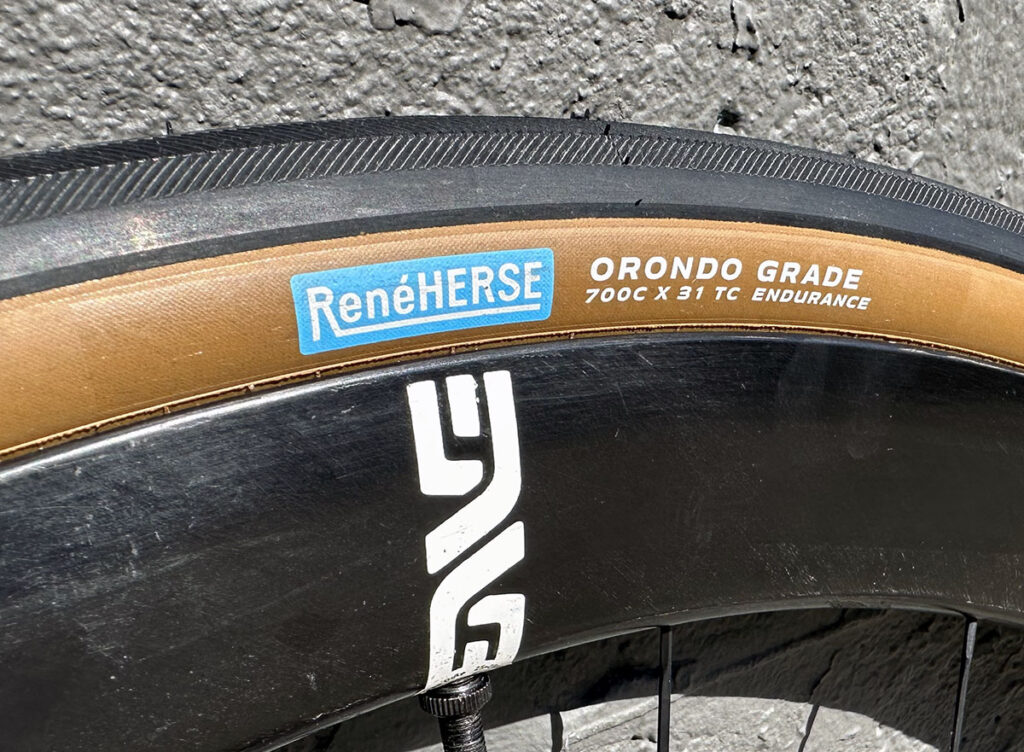UCI Limits Road Bike Tires to 31 mm
April 1, 2025
In a surprise move, the Union Cycliste Internationale (UCI) today handed down its latest technical rule: Effective immediately, road bikes are limited to a maximum tire width of 31 mm.
The new rule has been rumored for a long time. As more pro racers started using 30 mm tires, there was growing concern that we might see road bikes with tires wider than cyclocross bikes, where the UCI imposes a 33 mm width limit. “That would have made a mockery of everything the sport of cycling stands for,” said UCI president David Lappartient during a press conference announcing the new rule. Five-time Tour de France winner Eddy Merckx joined Lappartient behind the microphones and opined: “Road racing is supposed to be hard, and road bikes are supposed to be uncomfortable. Can you imagine people calling me the ‘Cannibal’ if I had been riding on plush 32 mm tires?”
It’s clear that the UCI has been taken by surprise by the all-road bike revolution. Jean Wauthier, UCI technical advisor, explained: “When pro racers moved from 23 mm to 25 mm tires, it seemed harmless at first. But then came 28s, now 30s, and it just keeps going. They are already talking about 40 mm tires for road bikes. And there’s an American company that’s offering 55 mm-wide road tires. Who knows where it will end? We should never have allowed the disc brakes that made all this possible!”
Back to the Stone Age?
A UCI official who spoke on the condition of anonymity to discuss sensitive internal discussions said that the limit was pegged at just 25 mm wide initially. However, there was pushback from bike makers who sponsor pro teams. These companies have made significant investments in molds for frames that are optimized for wider tires, and they didn’t want to go back to 25 mm rubber after promoting the benefits of the wider tires.
Pro riders were also opposed to such narrow tires. Tim Declercq, spokesperson of CPA, the union of professional racers, explained: “Going back to 25 mm tires would be dangerous. First, because they offer less grip and thus increase the likelihood of crashes. And second, because the harsher ride may cause long-term injuries of our riders.” It appears that 31 mm was chosen to maintain a “respectful distance” to cyclocross bikes with their 33 mm limit.

Reactions to the New Rule
Bike makers welcome the new 31 mm limit. As one industry source told us: “We weren’t too happy about road bike tires getting wider and wider. Road bikes are a small market these days, and having to update our models for wider tires every few years was getting cost-prohibitive. We also worried that road bikes would become indistinguishable from gravel bikes, and riders would no longer need multiple bikes.”
Tire makers have mixed feelings. Jan Heine, president of R&D at Rene Herse Cycles, explained: “On the one hand, 31 mm makes sense for road bikes. That’s where the bike still feels like a road bike, with quick handling and easy to rock from side to side when climbing or sprinting out of the saddle.”
So what’s the downside? Heine: “Well, this ends our plans of sending a team on 55 mm tires to Paris-Roubaix, have them attack on a cobble sector, ride away from the peloton, and then just time-trial to the finish. Our calculations show that this should be possible, and we’ve worked behind the scenes to make it happen. We’ve been collaborating with a bike maker to design a frame with aero that’s optimized for such wide tires. And we’ve been talking to riders who lack the watts to win the ‘Hell of the North’ currently, but who might stand a chance with this strategy.”
Rumors of Rene Herse’s plan have been circulating among pro teams for a while. Heine acknowledged that this may be one reason why the new rule was passed down less than two weeks before the ‘Hell of the North.’ Asked about his personal opinion on the UCI’s new rule, Heine was diplomatic: “There is a strong aesthetic component to cycling, and I appreciate that the UCI wants to preserve that. However, that shouldn’t come at the expense of true breakthroughs in technology that enhance cycling for everybody, not just pro racers.”

Is Gravel Next?
There are rumors that the UCI may apply the cyclocross tire width limit of 33 mm to gravel events in the future. It’s no secret that the sport’s governing body is eager to expand its influence over the previously rule-less gravel scene. This could be a problem for bike makers, who have been increasing tire clearances of their gravel bikes in small increments—requiring riders and racers to upgrade their bikes if they want to benefit from the latest advances in tire size. It appears that the UCI is more concerned about protecting the image of road racing. At the press conference, Jean Wauthier commented: “With ultra-wide tires, speeds in gravel races are becoming almost indistinguishable from road races. We need a clear hierarchy between these events. Remember ‘gravel grinding’? Riders are supposed to grind through gravel, not float over it. We are thinking about rules to enforce this hierarchy, so that road racing remains unchallenged at the top of the sport.”



